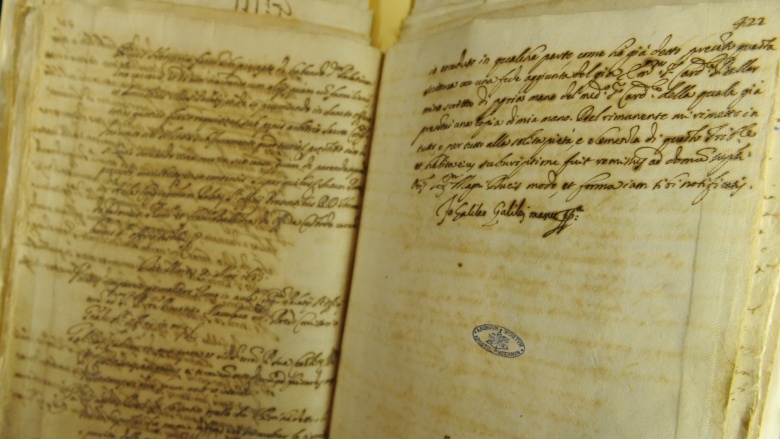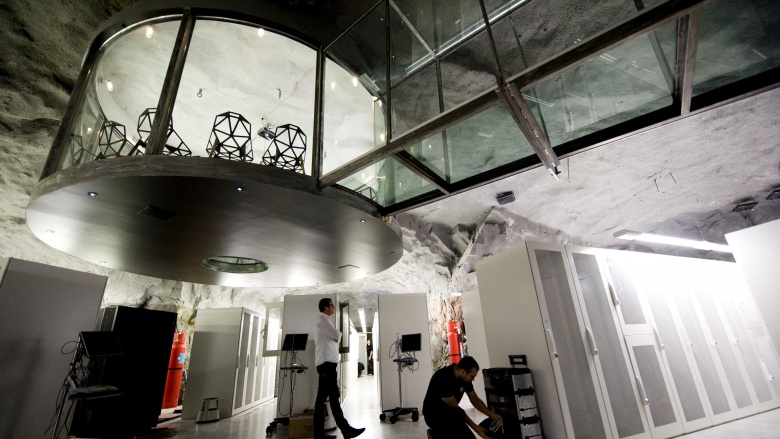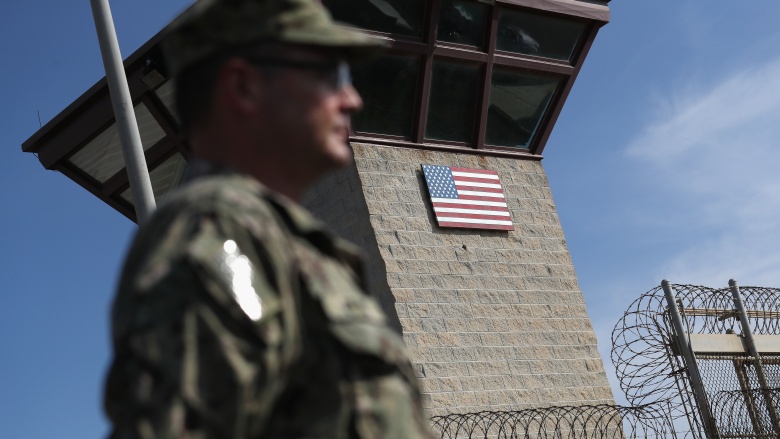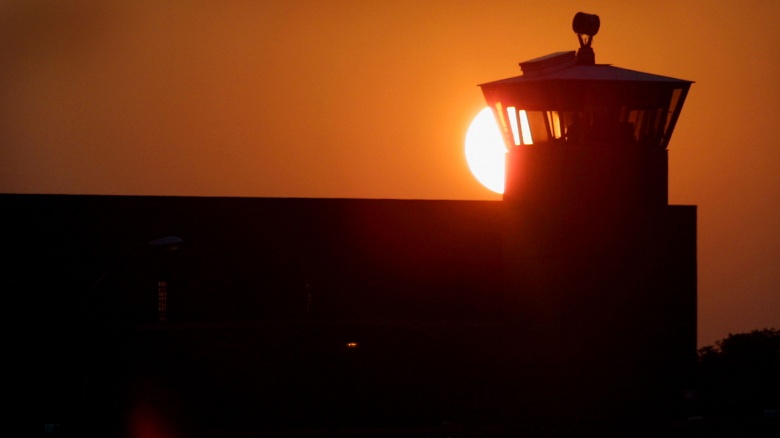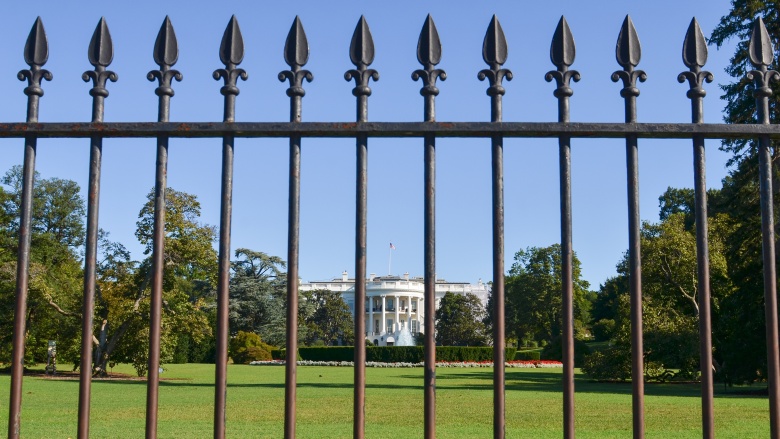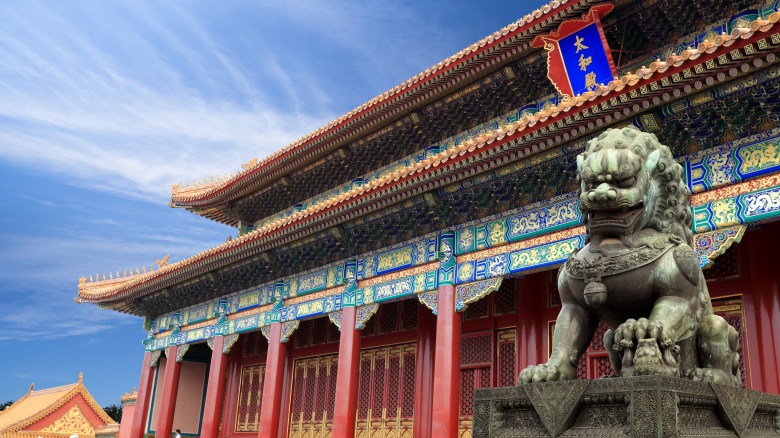The Most Heavily Guarded Places On Earth
It's human nature to want to know things. It's why we automatically want to push the button that's clearly marked, "Whatever you do, don't push this button." And when something's heavily guarded, we just know there has to be some good things inside the vault, the bunkers, the compounds ... we can't help it. So what's really going on in some of these places?
The Vatican Secret Archives
Today, a demand for increased transparency means that the Vatican Secret Archives aren't as secret as they once were, but many people still don't know about the heavily-guarded, absolutely 100% restricted area that not even the most important scholars are allowed into. The archives consist of an incredible 52 miles of shelves, and we ... sort of know what's in the off-limits part. The private documents of cardinals dating from 1922 to the present day are under lock-and-key, and also off-limits are the personal documents of every Pope since 1939, along with official, church-sanctioned annulment records.
According to those who have been inside (and been escorted past the terrifying Swiss Guards who stand watch at the entrance), the inside of the archives looks exactly like you'd expect. The technology is appropriately archaic for a storehouse of some of the most important documents from centuries and centuries ago. Priceless manuscripts are housed in centuries-old cabinets, and there's no way of telling what, exactly, is in there.
Academics and scholars can apply to be allowed into the archives (as long as they're not in the top-secret section of the underground vault), and for its 400th anniversary, a handful of documents were put on public display. They offered a tantalizing taste of what's piled on the Vatican's shelves, like documents concerning the excommunication of Martin Luther, transcripts from the trials of the Knights Templar, and letters to various popes from people like Mary, Queen of Scots and Michelangelo. (Mikey's letter warned Pope Julius II of an imminent walkout by the Vatican guard, who hadn't been paid in weeks. Leave it to the artist to sympathize with people getting screwed out of their money.)
Pionen White Mountains
Wikileaks is one of the most notorious, infamous sources of top-secret information in the world, so it's not surprising that they've made a lot of enemies. In order for them to keep doing what they do, they moved their servers to a super-secure, heavily guarded facility 100 feet beneath Stockholm. The Pionen White Mountains data center belongs to the Bahnhof internet provider, and they take their clients' privacy very, very seriously.
The bunker dates to 1943, and got a massive update during the Cold War, prepped for members of the Swedish government should things go sideways. That means this bunker is, quite literally, bombproof. It's been further updated by the internet provider so it looks like exactly what you might hope: all bare rock walls, elevated glass rooms, and just the overall feel of a supervillain's lair.
While Wikileaks moved in 2010 and was out again by 2014, the man at the head of Bahnhof, Jon Karlung, continues to protect his clients' privacy with an almost-fanatical devotion, not to mention a host of other safeguards. In addition to the foot-and-a-half-thick steel door that keeps people from entering the building, and back-up generators run by German submarine engines, they're also protected by Bahnhof's non-compliance with Swedish surveillance laws. After all, what decent supervillain lets themselves get hindered by silly old laws?
Guantanamo Bay
Guantanamo Bay isn't just the oldest of America's overseas bases, but it's the only one that's ever been in Communist territory. It's use as a prison facility for suspected terrorists only started in 2002 — a year later, there were 684 people being held there. The youngest inmate was only 14 years old and the oldest was 89, and over the years, the prison has been active it's had "residents" from 49 different countries.
Gitmo has made headlines since it was converted into a high-security, heavily-guarded facility, but the area has a weirdly long history that's usually not mentioned. It's so named because it sits on Guantanamo Bay, an actual bay where Christopher Columbus landed in 1494. Anyone who's the least bit familiar with Columbus knows that he was up to some shady stuff, and that just kicked off a whole bunch of uncomfortable history for the area. After Columbus, the bay became a haven for the pirates who sailed the Caribbean, and it also played a huge role in the Spanish-American War. After that, the US leased the area from Cuba, and the related treaty can only be dissolved if both parties agree to it. That's unlikely to happen soon, because like all the ugliest custody battles, Mommy and Daddy are too busy fighting to even think about compromising.
Terre Haute, Indiana
Terre Haute is called Guantanamo North, and there's good reason for that. Some of the country's most dangerous criminals are housed in the federal prison in unassuming Terre Haute, Indiana, and it's so effectively designed, run and guarded, it was used as a blueprint for the other Guantanamo.
In addition to the maximum security facility and the medium security one, it also has a "Special Confinement Unit," used solely for inmates on Death Row, and Communications Management Units, used for holding those imprisoned on terrorism charges. Inmates are watched via guards and surveillance cameras 24/7, communication with the outside world is next to non-existent (and always recorded when it does happen), and many of the same accusations of human rights abuses that have been filed against Guantanamo have been said of Terre Haute.
The names of the people held in Terre Haute are never made public, but NPR identified 86 of them during a 2011 investigation. Most were US citizens, and many were transferred there after being accused of radicalizing associates in other prisons, or for ordering outside crimes while still behind bars. They also got some pretty fascinating information on just how secure the prison is. Every moment is monitored from a remote location in West Virginia, and the annual surveillance budget was, at the time, $14 million. Civilians never see inside the prison (with the rare exception of attorneys), and any visits are strictly monitored and behind glass. If Andy Dufresne had been held here instead of Shawshank, he and Red would never have seen sunlight again.
The Dead Hand bunker
This one's such a heavily guarded secret, we're not even sure where it is, and we're definitely not sure if it was ever turned off.
In 1985, the US and the Soviet Union were in the middle of the Cold War. Both sides had their safeguards, and the Soviets' was a project called Perimeter, or more affectionately, Dead Hand. It was a computer-driven system designed to send out inquiries to determine if there had been a nuclear strike on Soviet soil, and if the highest levels of military controls had been compromised or destroyed. If they had been, the system would send a request alert to one final failsafe. It was a person, sealed inside this bunker, watching and waiting for the lights to turn green. If they did, that person was tasked with pushing a button that would send all Soviet nukes toward their Western Hemisphere targets.
Sounds like the plot of some late-night science fiction movie, right? But it's real, and Wired even got to talk to one of the men who helped build the system, Valery Yarynich. Once a member of the Soviet Strategic Rocket Forces and the Soviet General Staff, Yarynich said the system was built as a guarantee that even if a nuclear strike wiped out most of the Soviet command, they would still be able to strike back and, most likely, end the world. It had another purpose, too: to automate protocols that would need to be followed before button-pushers could get ahead of themselves.
The Dead Hand base was such a closely guarded secret that not only did the American government not know about it, but no Soviet civilians (including arms dealers) did, either. Russia's still not talking about it, and it's unclear as to whether or not Dead Hand was ever taken offline.
The White House
We Americans might take the White House for granted, but the stories behind why such extreme security measures need to be installed there ... well, they're incredibly weird.
We're not sure if it was just a more innocent time back at the beginning of the 20th century, but President Teddy Roosevelt reserved an hour a night to meet with any visitors that came knocking. According to one story, a man successfully showed up, was ushered into the Red Room, and met with the President for several minutes, before Teddy buzzed for security and asked them to remove the nutjob from the premises. They searched him before they kicked him out (which, in hindsight, they probably should have done first) and found he was packing a revolver. Later, in 1912, Michael Winter (who was armed with a knife at the time), shouldered past a doorkeeper and ran in to see President Taft. Twice.
It wasn't until the Great Depression that security was stepped up to the point where visitors would be searched before they were allowed in, but that still didn't stop some people. According to FDR's son, he had joined his parents for dinner and a movie at the White House, and when they turned the lights on after the film, they found that a stranger had joined them, too. He asked for an autograph and left. (Yes, he got it.) Security got increasingly better, but some people are just way too determined to be deterred by things like guns and highly trained law officers. In 1985, Robert Latta snuck into the White House while everyone else was busy paying attention to Ronald Reagan taking his Oath of Office. He had around 15 minutes of alone time exploring the Presidential mansion before anyone caught on. That's about 15 minutes too long for any old weirdo to just wander around the President's house.
Iron Mountain
Guards have walked the rounds through the vast network of underground hallways and vaults through Iron Mountain for decades, and they've guarded everything from priceless works of art to everyday documents signed by everyday people. As you might guess, something like that needs to be super-secure, and Iron Mountain stakes its reputation on it.
Their Butler County, Pennsylvania facility was constructed on the remains of an old mine, and they first opened their vaults to clients in the 1950s. Since their policies include strict confidentiality, we don't know what all is in there. We've heard about bits and pieces, sure, like the Corbis Image collection: a massive group of 27 million images stored in the the vault to keep them from decaying. There's also original film from movies and audio recordings, and from what we've gathered, the vaults are a treasure trove of the nation's culture.
The Forbidden City
There's not too much that's forbidden about China's Forbidden City today, as millions of tourists pass through it every year. They only see what's open to the public, though — there are still plenty of sealed rooms that are strictly off-limits. Security is also tight, and that's not surprising given the treasures that are housed there.
The real story behind the Forbidden City is insane, and it wasn't even fully explored in a 100-part documentary commissioned by the Palace Museum. Today, its vast museums house everything from ceramics and silver crafts from China's history, to personal artifacts of the 24 emperors who called the city home. And yet, while it was home to various emperors, the only people allowed in were the emperor, his harem and family, government officials, and the eunuchs that made up his army of servants. Which, at the very least, meant few traffic jams.
It's laid out in a careful pattern that reflects the position of the emperor in both the terrestrial world and the celestial one, and is protected by a massive wall and four heavily guarded gates, guarded by massive lions that represent the power of the emperor. Today, however, there's a new guard in town. Around 180 cats are in charge of patrolling the city and keeping it free of mice and rats, which they do with terrifying efficiency.
Scientology's RPF
Getting to the bottom of this one is a little tricky, as there's two very, very different claims about what the Rehabilitation Project Force is. According to the official Scientology Newsroom, the RPF was created in the 1970s, at the request of Sea Org members who had fallen from the good graces of their faith. The RPF was, in theory, a place where they could go to live, work, and reaffirm their dedication to Scientology. It admits that they're going to have to work hard, but testimonies from those that have escaped tell a much darker story.
Leaving Scientology gives a run-down of just what conditions people in an RPF facility face, and it includes working 365 days a year and having no personal freedoms. Paid a pittance, they work eight hours a day, study for five, and have half an hour devoted to each meal and seven hours for sleep, leaving half an hour of so-called "personal time." There's no phones or interactions with each other, and any interaction with outsiders is closely watched by security. Security forces escort their charges between the buildings of the RPF, and breaking any rule results in more time added onto the sentence.
In 2012, reporters in Australia got a look at what went on inside this camp when they talked to Shane Kelsey, who signed his billion-year contract (yes, they're that long) when he was 8 years old, and was sentenced to the 100-hour RPF work weeks when he was just 15. Separated from his parents, Shane's father eventually got police involved when he tried to get his son out of the compound — even then, the boy was escorted by RPF enforcers when he stepped out of the facility. Others describe similar stories and episodes that amount to nothing short of torture conducted by the guards, but the truth of Scientology's prison reform camps remains in the dark.

